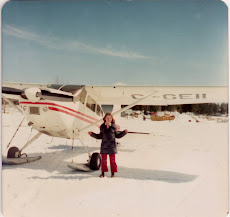My two part, BAI-funded radio documentary series “WB
Yeats: Words for Music Perhaps”, shining light on the great Nobel Laureate’s
complex and fascinating relationship to music, will be re-broadcast on RTE Lyric FM in the Lyric Feature slot on consecutive Fridays, April 4th, and April 11th, at 7pm.
The first programme takes us on a
unique sonic journey to ponder WB Yeats and his musical experiments,
collaborations (from Elgar to Harry Partch), and theories during his own
lifetime. What was the great poet
hearing in his inner ear? DIT
[Dublin Institute of Technology] Conservatory of Music record scores WB Yeats
himself commissioned for his Plays for Dancers, from little known composers
Walter Morse Rummel and Edmond Dulac, which are heard here for the first time
ever. We learn about how the obscure Walter Morse Rummel met WB Yeats in
esoteric London circles, and how their collaboration came about. The first musicians ever to
perform and record Rummel’s score for “The Dreaming of the Bones”, the DIT
Conservatory musician-researchers share their insights into and experience of
Yeats’s musicality or lack thereof. Yeatsian experts enlighten us on his
theories, revealing that WB Yeats never allowed his composer/collaborators to
have their own voice. His words
ruled supreme. Yeats was considered to be tone deaf by many, or at least tuned
in to an “alternative” scale, as we hear in a rare BBC recording in which the
poet himself sings out of tune.
Interweaving rare recordings of WB Yeats himself, we hear how towards
the end of his life, the exciting new medium of radio revived his interest in
and enthusiasm for, the bardic arts.
This Yeatsian sonic journey highlights how Yeats’s late radio recordings
rhyme in with his early sonic experiments with Florence Farr in “Speaking to
the Psaltery”, informed by the great poet’s utopian desire to bring about a
democratic “magical revolution” across all echelons of society.
Programme One is narrated by Tom Hickey, and features DIT Conservatory of Music musicians Cliona Doris (Harp and Arrangements), Tom Doorley (Irish flute), Noel Eccles (Percussion), Julie Maisel (Classical Flute), David Scott (Singer), Arun Rao (Cello), and sound recordist Ben Rawlins; "Everlasting Voices" team William Brooks (Composer), Nuala Hayes (Auto-harp), and Paul Roe (Clarinet)as well as contributions by Ron Schuchard, Margaret Mills Harper, Declan Kiberd, Harry White, Emilie Morin, and the voice of WB Yeats himself.
The second programme explores
contemporary musical interpretations of WB Yeats’s words, free of his own
strictures and dicta, by great Irish composer Bill Whelan, and top Irish
contemporary classical composer, Donnacha Dennehy. In the late 1980s and early 1990s, Professor JW Flannery
directed a rare season of Yeats plays at Dublin’s Abbey theatre, which WB Yeats
helped to found. We get a rare
glimpse into Flannery’s creative process with the then fledgeling composer Bill
Whelan, as they reminisce on those groundbreaking productions in an intimate
and unguarded conversation, interwoven with excerpts of Whelan’s scores. Actress Olwen Fouere shares her extraordinary
approach to reciting Yeats’s verse in Flannery’s productions. Whelan admits this is where he learned
his metier as a theatre composer, and that his world-renowned score for
Riverdance grew out of these Yeats productions. Donnacha Dennehy finally lets us in on his journey to
composing music for Ireland’s most iconic poet, from young grad student in the
USA to his recent exquisite and accomplished settings of Yeats poems for soprano Dawn Upshaw in "Gra agus Bas".
Programme Two is narrated by myself, and features Bill Whelan, Jim Flannery, Olwen Fouere, and Donnacha Dennehy, as well as Yeats compositions by Whelan, Dennehy, and a tiny snippet of Sean Millar (for a Brokentalkers Yeats project that is in development), the voice of WB Yeats from the BBC archives, a hint of Harry Partch, and others, related to the story.
Producer: Deirdre Mulrooney
Writer/Researcher:
Deirdre Mulrooney
Sound
Supervision: John Davis
Commissioning
Editor for RTE Lyric FM: Olga Buckley
Liaison
Producer/ Technical Support: Eoin O’Kelly


















